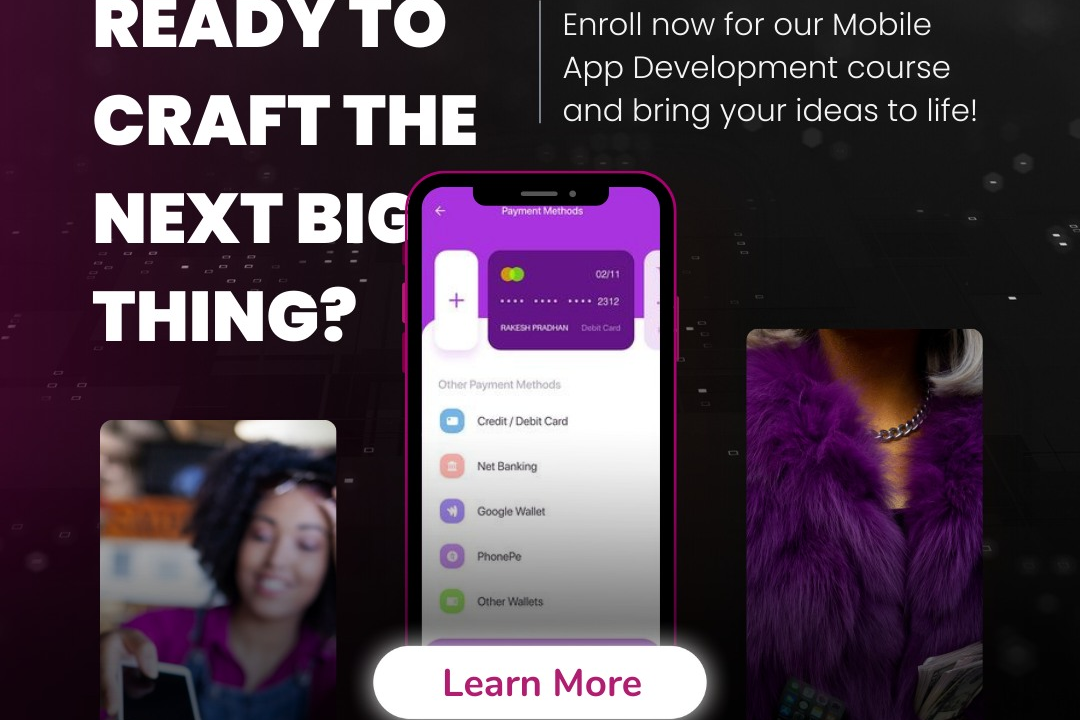Flutter User Feedback Loops
Enhancing User Experience in Flutter: Leveraging Feedback Loops
Flutter User Feedback Loops
Flutter user feedback loops involve continuously gathering, analyzing, and incorporating user feedback to enhance the development process and the final product. These loops typically consist of collecting user insights through in-app surveys, usability tests, and analytics, which help developers understand how users interact with the app and identify pain points. By iterating on the design and functionality based on this feedback, developers can make informed decisions to improve user experience, address issues, and implement desired features. This dynamic process encourages ongoing engagement with users, fostering a better alignment between the app's offerings and user needs, ultimately leading to higher satisfaction and retention rates.
To Download Our Brochure: https://www.justacademy.co/download-brochure-for-free
Message us for more information: +91 9987184296
1 - Understanding User Needs: Gather initial user requirements to understand what features are essential. This helps in building a user centric application.
2) Prototype Development: Create prototype apps using Flutter. Prototypes allow users to interact with the app early in development, facilitating feedback.
3) Usability Testing: Conduct usability tests with real users to observe how they interact with your Flutter app. This is crucial to identify areas of improvement.
4) User Surveys: Utilize surveys to collect structured data on user satisfaction and feature requests once the app is deployed.
5) Feedback Channels: Establish multiple feedback channels (in app feedback forms, social media, forums) to gather user opinions continuously.
6) Version Release Notes: Communicate changes made in response to user feedback through detailed version release notes, reinforcing that user voices matter.
7) Iterative Development: Employ an Agile development process where user feedback shapes the next iteration of the app, improving features incrementally.
8) A/B Testing: Implement A/B testing to compare user preferences between different features or designs in the app, allowing for data driven decisions.
9) Performance Analytics: Use analytics tools to track user behavior within the app, providing insights into what users find engaging or problematic.
10) Community Engagement: Build a community around your app where users can share experiences and feedback, fostering user loyalty and innovative ideas.
11) Feature Prioritization: Use the feedback collected to prioritize features based on user demand and usability, ensuring you're meeting the most critical user needs.
12) Beta Testing Programs: Launch beta testing programs to get early feedback from users who are willing to try out new features before general release.
13) Visual Feedback Tools: Implement visual feedback tools like heatmaps to understand user interactions, highlighting areas that may need redesign or clarification.
14) Documentation and Tutorials: Provide documentation and tutorials based on common user feedback, helping users navigate features or troubleshoot issues.
15) Continuous Learning and Improvement: Foster a culture of continuous learning where team members analyze feedback trends and adapt strategies to enhance user experience consistently.
These points can help students understand the essential role of user feedback in the iterative process of developing robust and user friendly applications with Flutter.
Browse our course links : https://www.justacademy.co/all-courses
To Join our FREE DEMO Session: Click Here
Contact Us for more info:
Continuous Integration for Android
Android Training Vellore
salesforce certification online
Flutter developer course in Delhi
java training institute in indore











